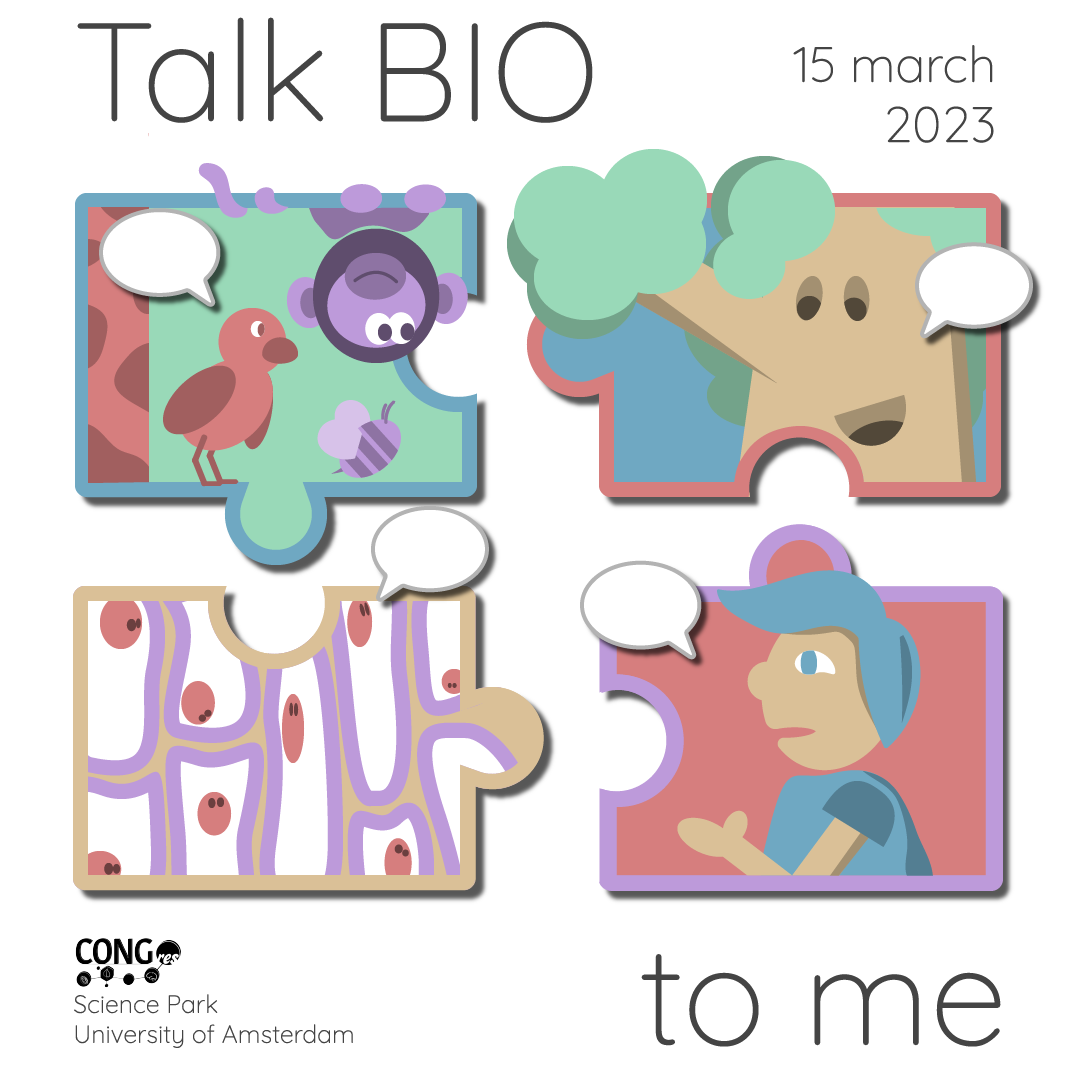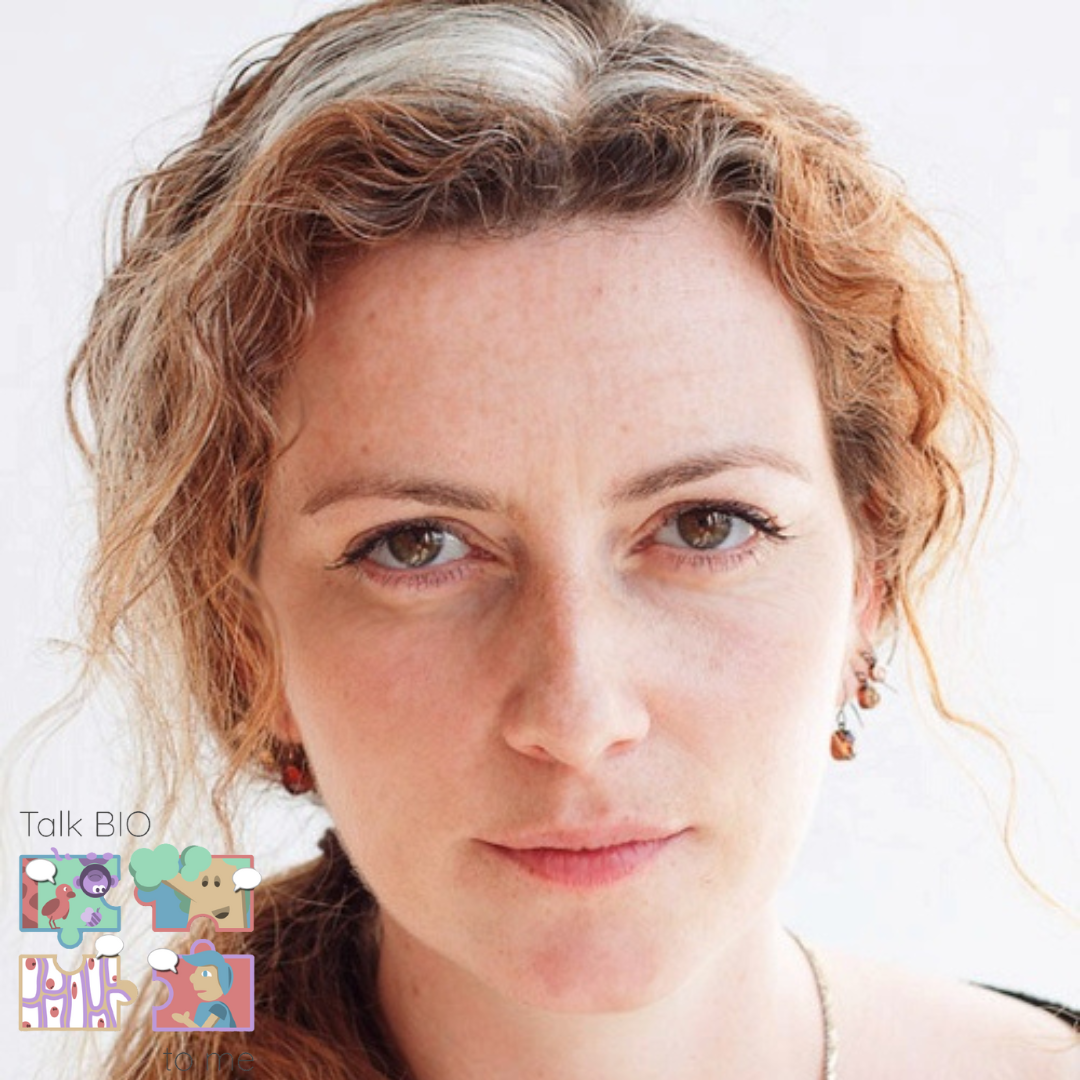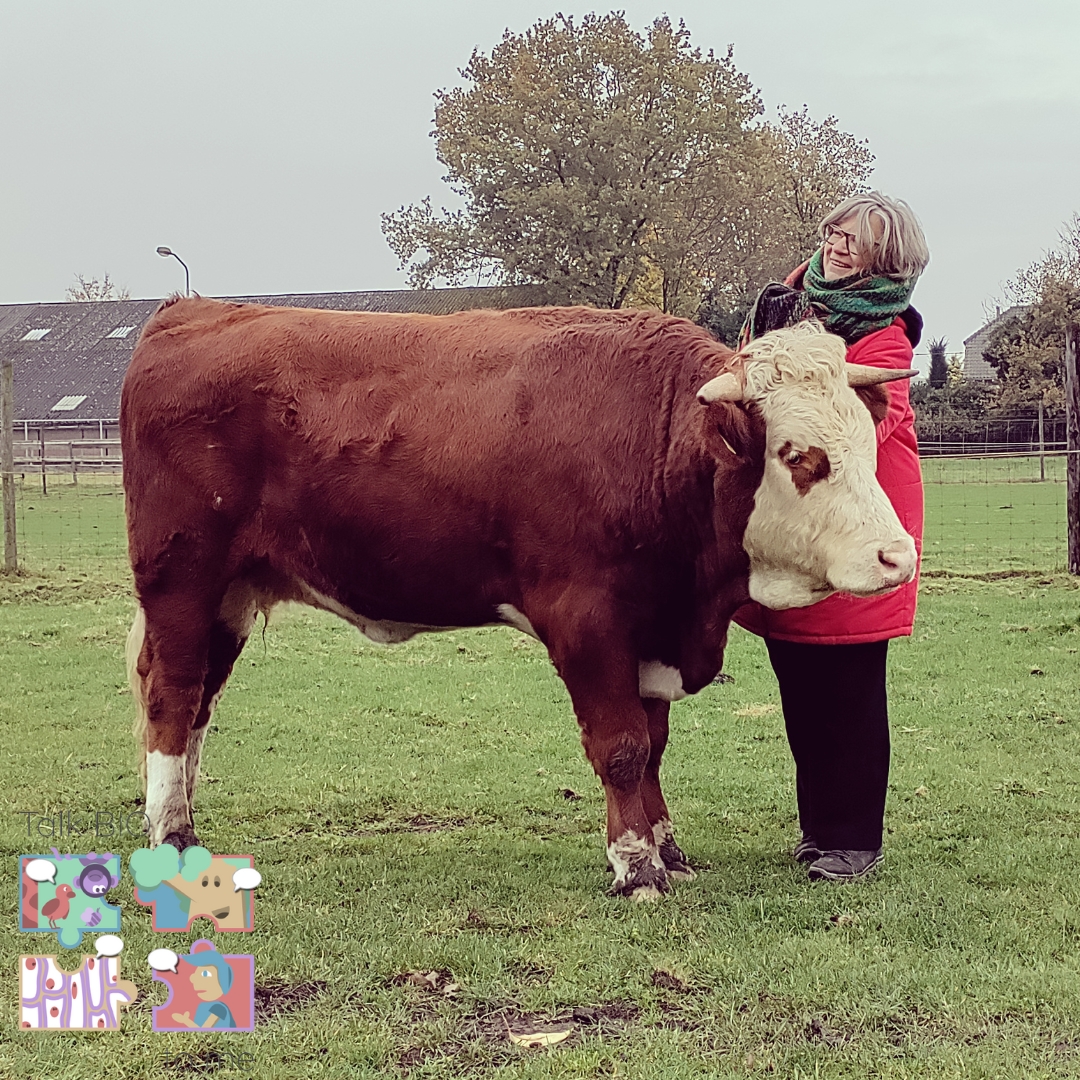
The 17th edition of our CONGres, ‘Talk Bio to Me’, took place on the 15th of March 2023. The day was filled learning about communication!
Conversations, discussions, chats, lectures, debates, it all happend during this edition of the CONGres! The intersting theme of communication was explored from the corners of life sciences, but also approached from different disciplines. It was a day filled with communication between humans, animals, cells and more!
Main speakers:
Prof. dr. Astrid Groot

Prof. dr. Astrid Groot did a MSc at UvA (graduated in 1994), followed by a PhD at WUR from 1995 – 2000 and a postdoc at North Carolina State University (NCSU), where after 3 years she became research assistant professor and received my first personal grant. Then in 2007 she became group leader at the Max Planck Institute for Chemical Ecology, and in 2011 she was one of the first 3 hires at UvA on a MacGillavry fellowship (as associate professor) (and/but combined this with her group leader position at MPICE until 2017). In 2017 she became full professor of Population & Evolutionary Biology and in 2018 department head in IBED.
Evolution of sexual communication signals and responses
Mate choice directly affects the level of gene flow between individuals within and between populations. Therefore, the evolution of sexual communication systems is likely an important determinant in the speciation process. Sexual signals and responses evolve through sexual selection and species interactions at multiple levels. Sexual selection forces may come from female as well as male choice and intrasexual competition in one or both sexes. Closely related species with similar mating signals may cause communication interference, secondary metabolites of host plants may cause stress, and pathogens and parasites may directly or indirectly affect sexual signals and responses.
Sexual signals in insects can be chemical, visual, acoustic or a combination of these different modalities. Moths are classical models for studying the evolution of sexual attraction through sex pheromones. Females produce a species-specific pheromone blend that attracts males from a distance, after which close-range courtship occurs which includes female choice (1,2). Through a combination of genetic analyses and behavioral lab and field experiments, we investigate the genetic changes underlying sexual interactions that lead to population divergence, including QTL and transcriptomic analyses and CRISPR/cas9 experiments (3-6) and field studies on the biological relevance of this variation (7,8). We also measure the natural selection forces affecting sexual attraction, including parasites and pathogens (9,10), and try to extrapolate micro-evolutionary processes to macro-evolutionary biodiversity patterns (11,12).
1) Zweerus et al. 2021, Anim Behav 179; 2) Zweerus et al. 2022, Ecol Evol 12; 3) Lassance et al. 2010, Nature 4661; 4) Groot et al. 2014, Proc B 281; 5) Koutroumpa et al. 2016, PNAS 1133; 6) Unbehend et al. 2021, Nat Comm 12; 7) Groot et al. 2006, PNAS 103; 8) Van Wijk et al. 2017, Sci Rep 7; 9) Barthel et al. 2015, BMC Evol Biol 15; 10) Gao et al. 2019, J Invert Pathol 170; 11) Groot et al. 2016, Annu Rev Entomol 61; 12) De Pasqual et al. 2021, TREE 36.
Dr. Saskia van Asten

Dr. Saskia van Asten studied bio-pharmaceutical sciences at Leiden University. She did her PhD under supervision of Dr. Spaapen and Prof. Dr. van Ham at Sanquin in Amsterdam where she used high-throughput screening to identify additional mechanisms of intercellular immunological communication. She did a postdoc on the systemic immune system in glioblastoma in the group of Dr. Garcia-Vallejo at the VUmc. Saskia is currently working as a data scientist in translational research at Genmab.
Communication in immune responses: insights for immunotherapy
Communication is a vital component of a properly functioning immune system. This system is tasked with the detection and clearance of different pathogens and aberrant cells. Unique receptors, expressed by both immune and non-immune cells, and soluble proteins, such as antibodies and the complement system, can identify different types of threats. Receptor ligation results in the activation of signaling cascades that determine which effector mechanisms should become activated. Each immune response is uniquely adapted to the threat at hand, as for example clearance of a bacterium requires a different approach compared to clearance of a tumor. Tight regulation is in place to prevent unwanted activation.
Unfortunately, the immune system does not always function properly. Both inappropriate suppression and overactivation result in disease: viruses can escape detection, tumors suppress immune cells, while an overreactive immune response can cause allergy, autoimmunity or sepsis. Immunotherapy aims to overcome these issues. For example, vaccination educates immune cells to recognize pathogens, TIL-therapy activates immune cells ex vivo, while antibodies may aid the anti-tumor response or inhibit pro-inflammatory signaling in rheumatoid arthritis. In conclusion, the coordination of immune responses forms the source of inspiration for immunotherapy.
Dr. Suzanne Dikker

Suzanne Dikker’s work merges cognitive neuroscience, performance art and education. She uses a ‘crowdsourcing’ neuroscience approach to bring human brain and behavior research out of the lab, into real-world, everyday situations, with the goal to characterize the brain basis of dynamic human social communication. As a senior research scientist at the Max Planck — NYU Center for Language, Music and Emotion (CLaME), affiliate associate professor at the Department of Clinical Psychology at VU Amsterdam, and member of the art/science collective OOSTRIK + DIKKER, Suzanne leads various research projects, including MindHive, a citizen science platform that supports community-based initiatives and student-teacher-scientist partnerships for human brain and behavior research.
Harmonic Dissonance: Bridging art, science, and education to study the neural basis of human social communication
How do we build common ground with the people around us in our daily lives? Does human interaction mediated by technological interfaces help or hamper communication? Do students learn better when they ‘click’ with their teachers? To answer these questions, I bring human neuroscience research out of the lab, into real-world social contexts such as classrooms and museums. Across projects, we use biofeedback to embody the elusive notion of ‘being on the same wavelength’ with another person through visualizing and sonifying the interpersonal (de)synchronization of brainwaves and movements in real time. Together, we hope to advance the scientific understanding of the brain basis of human social interaction, while at the same time enabling researchers to engage the general public in citizen neuroscience efforts and neuroscience outreach.
Parallel speakers:
Prof. Dr. Leonie Cornips

Leonie Cornips published her PhD dissertation in Linguistics at the UvA (1994) on syntactic variation in the speech community of Heerlen, a former coal mining town. Since 1994 she is affiliated at the department of Language Variation at the Meertens Institute, and since 2019 at NL-Lab, Humanities Cluster of the Royal Netherlands Academy of Arts and Sciences. She used to investigate linguistic variation in new developing regional varieties due to induced language contact situations between speakers of Dutch and local dialects and emerging varieties in the Netherlands such as Moroccan-, Turkish-, and Surinamese-Dutch. Cornips is also professor “Languageculture in Limburg” at Maastricht University since 2011 and since then her research has also focused on local identity constructions through language practices including linguistic place-making and belonging. At present she explores nonhuman animal languages problematizing the a priori distinction between the human and the animal. She conceptualizes language as a multimodal, embodied and multisensorial phenomenon from a posthumanism perspective. She is conducting ethnographic field work among industrial dairy farms in the Netherlands.
Cows’ talk to each other, and to humans
In this talk she will present research examining how dairy cows communicate with each other and with humans. This research provides a new lens on the concept of language: instead of postulating a priori that ‘language makes us human’ or asking which species have language, this project “ask[s] how language actually works” (cf. De Waal and Ferrari 2010: 201). Therefore, she will present how language is embodied in dairy cow individuals in different situations when interacting with others. She takes seriously the idea that action, perception and attention affect language and thinking (cf. Vallée-Tourangeau and Cowley 2013). Drawing on fieldwork in an intensive Dutch dairy cow farm since fall 2018, the aim is thus to conceptualize the language of dairy cows. In addition to sound, she also includes movement, position and facial expressions (kinesics), touch (haptics), space (proxemics) and various sensorial capacities like smelling, seeing and hearing as expression of language.
This research is part of the animal turn (Haraway, 2016) in posthuman linguistics (Cornips 2019, 2022; Cornips & van den Hengel 2021) that questions ‘the assumed universality of human experience and asks how and why we draw particular distinctions between humans and other animals (Pennycook, 2018). Hence, western linguistics, in particular, contribute(d) deeply to the construction of difference between human and non-human animals by positing the ideology that language is what makes us humans human (Meijer 2019).
Dr. Marieke Woensdregt

Marieke Woensdregt is a computational cognitive scientist who researches the interplay between language, inference, social cognition, and social interaction. Language use relies on (i) flexible inferencing skills (e.g. to combine linguistic knowledge and background knowledge to infer the meaning of a novel word like “mask-shaming”); (ii) socio-cognitive skills such as theory of mind (e.g., to decide whether to talk about “the house” or “a house”), and (iii) interactional skills (e.g., to ask for clarification). She uses computational modelling to tackle challenging questions about these capacities and their interplay. She currently works as a postdoctoral researcher at the Max Planck Institute for Psycholinguistics and the Donders Centre for Cognition at Radboud University in Nijmegen.
Computational modelling of social interaction and social cognition in communication (in humans and other animals)
Language use in humans requires both social cognition (i.e., taking your conversation partner’s perspective, thinking about what knowledge you share, etc.) as well as social interaction (e.g., saying “mmhmm” to indicate that you’re following along, or “Huh?” to indicate that you’re having trouble understanding). In this talk, Marieke Woensdregt will present computational modelling work that investigates the cognitive processes that underlie such communicative social cognition (also known as pragmatic reasoning) and social interaction (focusing on the phenomenon of interactive repair, in which breakdowns in communication are resolved). In addition to this computational modelling work, she will present a theoretical framework for investigating interactive repair in non-human animals, with some initial examples of how this framework can be applied to investigated communication in chimpanzees and bonobos.
